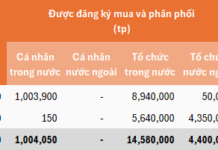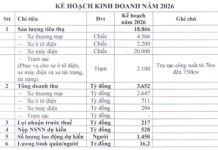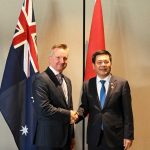On August 21, in Hanoi, the Central Economic Commission, in collaboration with the Ministry of Industry and Trade and the Vietnam National Oil and Gas Group, organized a conference to propagate and implement Conclusion No. 76-KL/TW, dated April 24, 2024, of the Politburo on the implementation of Resolution No. 41-NQ/TW, dated July 23, 2015, on the orientation of the Vietnam Oil and Gas Industry Development Strategy by 2025, with a vision towards 2035, and some orientations for the new period.

Head of the Central Economic Commission and Deputy Prime Minister Tran Luu Quang emphasized the need to promote institutionalization and create a legal corridor to overcome difficulties and promote the development of the oil and gas industry – Photo: VGP/BKT
The Head of the Central Economic Commission and Deputy Prime Minister Tran Luu Quang emphasized the special attention given by the Party and the new context and situation, presenting both opportunities and challenges for the development of the oil and gas industry.
Conclusion 76-KL/TW puts forward major guidelines and policies to take advantage of the potential and strengths of the country in general and the oil and gas industry in particular, enabling the industry to overcome challenges and achieve sustainable development.
According to Nguyen Duc Hien, Deputy Head of the Central Economic Commission, after more than 8 years of implementing Resolution 41-NQ/TW, the Government and the Prime Minister have led and directed ministries and sectors to build and issue many legal documents, strategies, and plans related to the development of the oil and gas industry. In particular, science, technology, and human resource development in the industry have been given great attention and have achieved positive results.
However, the oil and gas industry also has some limitations and shortcomings regarding the implementation of certain strategic objectives, infrastructure reserves, and the progress of some large projects…

Deputy Prime Minister Tran Hong Ha and leaders of some ministries and sectors present flowers to congratulate Deputy Prime Minister Tran Luu Quang on his appointment by the Politburo as Head of the Central Economic Commission – Photo: VGP/BKT
The conference discussed and propagated some key orientations, tasks, and solutions to be deployed in the spirit of Conclusion 76-KL/TW and Resolution 41-NQ/TW: Building and forming several large-scale national energy industry centers; developing oil and gas enterprises with regional and international competitiveness associated with the leading role of state energy corporations; continuing to improve institutions and laws; and further promoting the core role of state oil and gas corporations…
The delegates agreed that, in the immediate future, state oil and gas corporations need to focus on developing a new development strategy and effectively implementing the restructuring plan to ensure energy security, effectively serve production and consumption, and stabilize the market.
Other enterprises in the oil and gas sector should focus on implementing investment projects that have been assigned in accordance with approved plans and strategies, ensuring project progress and investment efficiency…
Concluding the conference, the Head of the Central Economic Commission and Deputy Prime Minister Tran Luu Quang evaluated that, in the current context, the difficulties and challenges also present great opportunities for the oil and gas industry if it can promptly seize and promote its strengths in terms of experience, infrastructure, facilities, and high-quality human resources.
With the energy transition trend, the oil and gas industry needs to focus on promoting its potential and advantages to develop renewable and new energy sources. This is a breakthrough direction to ensure the sustainable and modern development of the oil and gas industry, in conjunction with promoting a rapid green and digital transformation.
The industry should also focus on attracting and encouraging investment from non-state economic sectors and international financial institutions, as well as paying attention to developing high-quality human resources associated with policies to attract talents and provide specialized training to meet international requirements and standards.
Party committees at the central and local levels, Party committees of state energy corporations, need to consistently implement the guidelines and policies, the path, and the thorough implementation of Resolution 41-NQ/TW, Conclusion 76-KL/TW, and Resolution 38/NĐ-CP. Localities should pay attention to developing the energy sector based on their strengths and feasibility.
Unveiling new horizons for the energy sector in Vietnam
On February 22, in Hanoi, the Ministry of Industry and Trade held a conference (both offline and online with localities) to implement Vietnam’s Hydrogen Energy Development Strategy until 2030, with a vision towards 2050 (Hydrogen Energy Strategy), which was approved by the Prime Minister in Decision No. 165/QD-TTg on February 7, 2024.
Encouraging Australian businesses to invest in renewable energy in Vietnam
On March 5th, according to the news from the Ministry of Industry and Trade, on the sidelines of the Special High-Level Commemorative Meeting of the 50th Anniversary of ASEAN-Australia Relations and Prime Minister Pham Minh Chinh’s official visit to Australia, Minister of Industry and Trade Nguyen Hong Dien had a bilateral working session with Australian Minister for Climate Change and Energy, Chris Bowen.











































